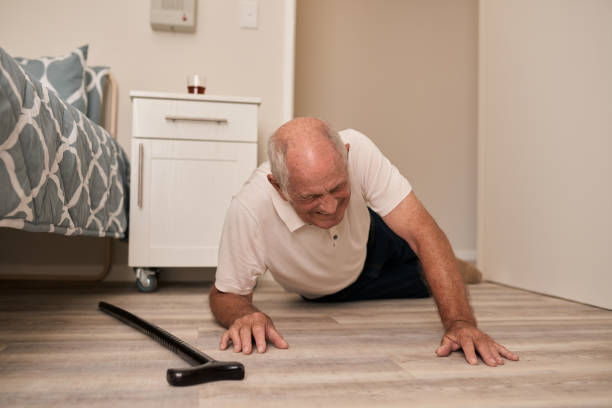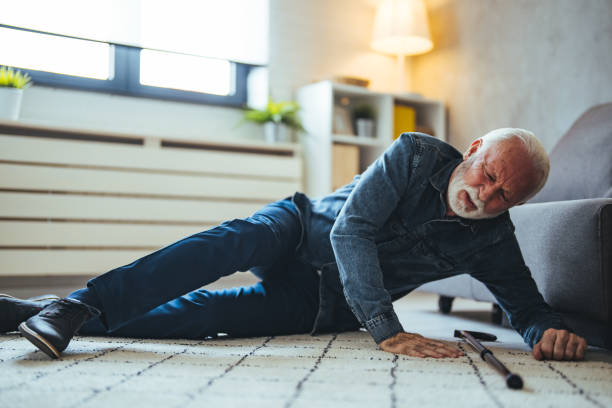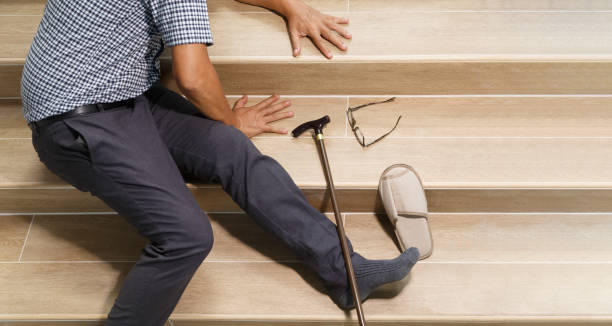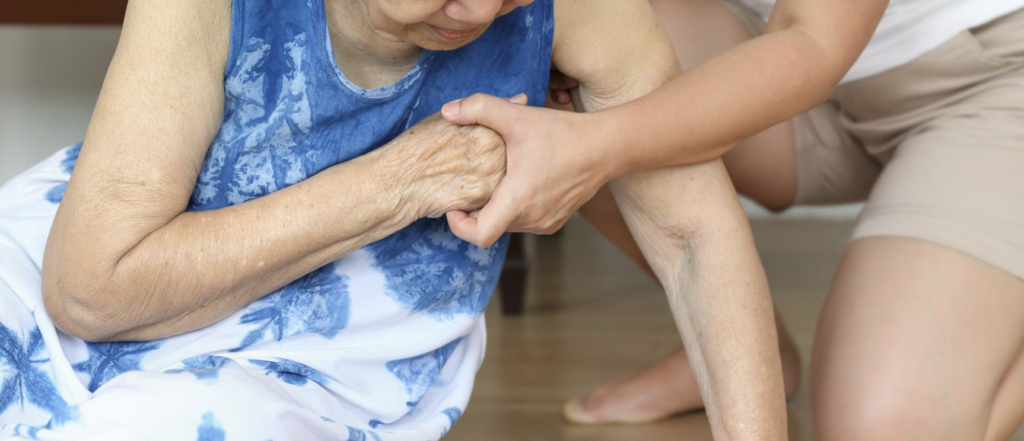Health
How to Respond When an Elderly Person Falls
Unexpected falls can be deadly and prevalent among the elderly. When a fall occurs, it is critical to understand how to respond quickly and efficiently. In this article, we will look at what to do when an elderly person falls and provide you with useful tips and methods.
Understanding the Risks of Falls in Elderly Individuals
Falls are more than just accidents; they can have serious repercussions, including hip fractures, head injuries, and loss of independence. That is why it is critical to act quickly and effectively. Understanding the dangers of geriatric falls is the first step toward preventing them.
Several factors contribute to the increased risk of falls among the elderly. Age-related changes in vision, balance, and muscle strength can make patients more prone to falls. Chronic health issues, such as arthritis, diabetes, and heart disease, can all raise the risk. Additionally, certain drugs, particularly those that influence blood pressure and balance, can increase the likelihood of falling.
To avoid falls, it is critical to address these risk factors. Regular check-ups with healthcare professionals can help discover and manage any underlying health issues. Medication reviews can also help to reduce the risk of side effects and interactions. Furthermore, encouraging the elderly to keep physically active and participate in exercises that increase balance and strength can greatly lower their risk of falling.

Common Causes of Falls in the Elderly
Understanding the common causes of falls among the elderly is critical for effective prevention and response. While each instance is unique, certain factors typically contribute to falls.
Environmental risks are a primary cause of falls. Slippery flooring, loose carpets, congested walkways, and dimly illuminated spaces can all increase the likelihood of tripping and falling. Creating a secure environment requires removing or securing any possible dangers. Installing grab bars in bathrooms, using non-slip mats, and providing adequate illumination will significantly reduce the danger of falling.
Another significant cause of falls is inadequate footwear. Ill-fitting shoes with worn-out soles or high heels might make it difficult for the elderly to keep their balance. Encourage them to wear comfortable, supportive footwear with non-slip soles to avoid falls.
Medical issues and drug adverse effects can sometimes cause falls. Dizziness, fainting, and lightheadedness can all lead to abrupt falls, particularly in the elderly. Certain drugs, including sedatives and antidepressants, can impair balance and coordination. Medication should be reviewed on a regular basis with healthcare specialists, and dosages should be adjusted or switched to alternatives as needed.
The Importance of Quick Response and Assessment
When an elderly person falls, prompt intervention and assessment are critical. Acting quickly can reduce the risk of further harm and encourage a faster recovery. Here’s what you need to do:
- Maintain cool and soothe the individual. Let them know you’re available to assist and that medical attention will be sought if necessary.
- Assess the circumstance. Look for any indications of injury, such as blood, swelling, or deformity. If the victim is unconscious or complaining of acute pain, seek medical attention immediately.
- Ask the person if they can move or if they are in pain or discomfort. If they are able to move, assist them in slowly rising to a sitting posture. If they are unable to move or are in extreme agony, it is preferable to wait for medical help to arrive.
- If the client is able to sit up, allow them to rest for a few moments before assessing their mental awareness. If they appear confused, disoriented, or have difficulty communicating, they may have suffered a brain injury and require emergency medical assistance.
- Assist the individual in rising up gently and steadily. Use a stable item, such as a chair or a wall, to provide support. If they are unable to stand or are in extreme agony, it is preferable to wait for medical help to arrive.
Remember, each situation is unique, and it’s important to use your best judgment when responding to a fall. When in doubt, always seek medical assistance.

Assessing the Situation and Ensuring Safety
Once the immediate response and assessment are done, it’s important to assess the situation further and ensure the person’s safety. Here are some steps to follow:
- Assist the person in finding a safe and comfortable area away from potential threats. If required, use cushions or blankets to add support and cushioning.
- Encourage the individual to remain still and avoid any unexpected movements. This will help to prevent future injury, especially if there are any suspected fractures or head traumas.
- If the patient is bleeding, apply mild pressure to the wound with a clean cloth or bandage. If the bleeding is serious or persistent, get medical attention immediately.
- If the person is conscious and able to talk, inquire whether they are in any pain or suffering. If they are, give them over-the-counter pain relievers at the appropriate dose.
- Stay with the individual until medical personnel come. Provide reassurance and comfort, and engage them in conversation to divert them from any pain or fear.
Calling for Medical Assistance if Necessary
In some cases, calling for medical assistance is necessary after an elderly person falls. It’s important to be vigilant and seek professional help if any of the following signs or symptoms are present:
- Loss of consciousness or confusion
- Severe pain or inability to move
- Head injury, such as a bump, laceration, or loss of consciousness
- Suspected fractures, dislocations, or deformities
- Difficulty breathing or chest pain
- Bleeding that is severe or doesn’t stop after applying pressure
- Any other signs of serious injury or medical emergency
When calling emergency services, provide them with detailed information about the person’s condition, including any known medical conditions, medications, and allergies. Stay on the line and follow any instructions given by the operator until help arrives.

Providing Immediate First Aid
While waiting for medical professionals to arrive, providing immediate first aid can help alleviate pain and prevent further complications. Here are some first aid measures you can take:
- If the person has small cuts or abrasions, carefully clean them with soap and water. Apply antiseptic ointment to the wounds and cover them with sterile dressings or adhesive bandages.
- For minor bruising or swelling, place a cold compress or ice pack wrapped in a cloth on the afflicted region. This will help to relieve pain and inflammation.
- If the person is having muscle or joint pain, gently massage the affected area to reduce tension and improve blood circulation. Avoid putting pressure directly on the afflicted area.
- Offer the person water or other drinks to keep them hydrated, especially if they are waiting for medical attention for an extended amount of time.
Remember, these first aid measures are only temporary solutions. It’s crucial to seek medical attention for a thorough evaluation and proper treatment.
Preventing Future Falls: Making the Environment Safe
Preventing future falls is crucial for the well-being and safety of elderly individuals. Creating a safe environment is key to reducing the risk of accidents. Here are some practical measures you can take:
- Remove or secure any potential risks from the home. This includes loose rugs, congested pathways, and anything that may cause tripping. Use non-slip mats, add handrails on staircases, and ensure adequate lighting throughout the home.
- Make sure the furniture is solid and easy to move around. Rearrange or eliminate any furniture that obstructs walkways.
- Install grab bars in restrooms, around toilets, and in showers or bathtubs. These offer additional support and stability when using these locations.
- Use assistance aids, such as canes or walkers, as needed. Ensure that these gadgets are correctly adjusted and in functioning order.
- Encourage frequent exercise for better balance, strength, and flexibility. Simple activities such as walking, tai chi, and yoga can help lower the chance of falling.
- Maintain regular check-ups with healthcare specialists to detect and manage any underlying health concerns that could raise your risk of falling.
- Review drugs with healthcare specialists on a frequent basis to discover and reduce any potential side effects or interactions that could impair balance and coordination.
- Consider getting professional assistance with house renovations and evaluations to ensure that the setting is safe and appropriate for the elderly.
By implementing these measures, you can significantly reduce the risk of falls and promote a safer living environment for the elderly.

The Role of Exercise and Physical Therapy in Fall Prevention
Exercise and physical therapy play a crucial role in fall prevention among the elderly. Regular physical activity helps improve balance, strength, and flexibility, reducing the risk of falls. Here are some exercises and activities that can be beneficial:
- Balance exercises: Standing on one leg, heel-to-toe walk, and side leg raises can help improve balance and stability.
- Strength exercises: Squats, lunges, and leg presses can help strengthen the lower body muscles, which are important for stability and mobility.
- Flexibility exercises: Stretching exercises, such as shoulder and calf stretches, can improve flexibility and range of motion, reducing the risk of falls.
- Cardiovascular exercises: Walking, swimming, and cycling are great options for improving cardiovascular fitness and overall health.
It’s important to consult with healthcare professionals or physical therapists to determine the most suitable exercises and routines for individual needs and abilities. They can provide guidance on proper techniques and progression.
Seeking Professional Help and Resources for Elderly Fall Prevention
In addition to implementing preventive measures at home, seeking professional help and resources can further enhance fall prevention efforts. Here are some options to consider:
- Consult with geriatricians or primary care physicians who specialize in caring for the elderly. They can conduct complete examinations, identify underlying risk factors, and create tailored fall prevention methods.
- Engage the services of occupational therapists who can analyze the home environment and provide recommendations to improve safety and accessibility.
- Consider signing up for fall prevention classes or workshops offered by community centers or senior organizations. These programs frequently incorporate instructional seminars, exercise courses, and practical recommendations for preventing falls.
- Investigate assistive products, including as personal emergency response systems (PERS) or medical alert bracelets, which can enable instant access to assistance in the event of a fall or emergency.
- Stay up to date on local support groups and services for elderly fall prevention. These groups can offer useful information, assistance, and a supportive environment.
By utilizing these professional resources, you can gain additional knowledge and support in your efforts to prevent falls among the elderly.
Conclusion
Responding to falls in elderly individuals requires quick and effective action. Understanding the risks, identifying common causes, and taking appropriate measures can make a significant difference in providing immediate support and facilitating a speedy recovery. As a caregiver and a concerned individual, I have learned the importance of each step in this process, from assessing the situation to implementing preventive measures.
When faced with a fall, the first priority is to assess the situation for immediate dangers and ensure the safety of the individual. This involves carefully understanding the circumstances surrounding the fall and determining if there are any injuries or obstacles that need immediate attention. Seeking medical assistance is crucial, even if injuries seem minor, as they can have hidden implications, especially for elderly individuals.
Falls are not inevitable, and through proper awareness, education, and proactive measures, we can create a safer environment for our elderly loved ones. Armed with knowledge and resources, we can play a vital role in promoting their well-being, independence, and overall quality of life. The next time an elderly person falls, I feel confident in my ability to respond effectively, ensuring their safety and providing the necessary support.
Trusted Health, Wellness, and Medical advice for your well-being


